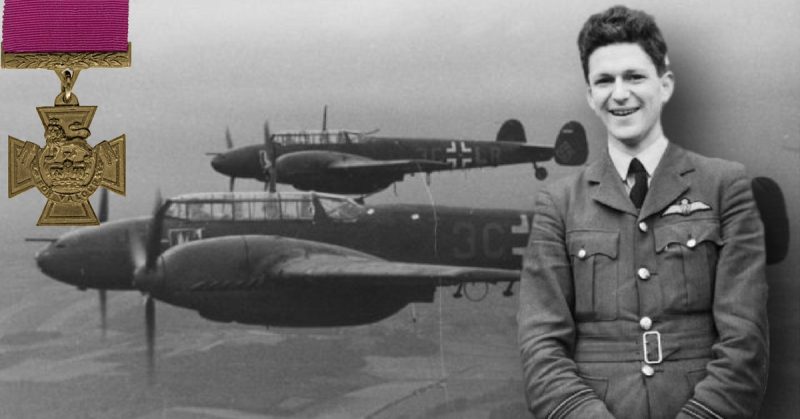On a bright sunny morning in August 1940, No. 249 Squadron, Royal Air Force, was patrolling near Southampton, in southern England. There was hardly any wind, and minimal cloud cover, perfect flying weather.
However, these men were at war and needed to keep a constant vigil for German fighters and bombers. As they scanned the horizon, Flying Officer James Brindley Nicolson spotted a group of three Ju-88 bombers.
His Squadron Leader gave him permission to take his section to intercept. Within the next hour, Nicolson would earn the only Victoria Cross awarded in RAF Fighter Command during the Second World War.
James Brindley Nicolson was born in Hampstead in 1917. Initially working as an engineer he joined the RAF in 1936, training as a fighter pilot. He first joined No. 72 Squadron but transferred to No. 249 once the war started.
During his entire career, his eagerness for combat and love of flying were noted by his commanders. He displayed leadership early on, and upon joining No. 249 he was made Acting Flight Commander. By August 1940, he was regularly patrolling, but so far had not seen combat.
The patrol that day had gone smoothly, however, all the men were on their toes. Southampton was a major target for the Germans; it housed one of the few British fighter plane factories. If the RAF were to keep up against a German onslaught, they would need every plane they could get. The loss of even one plant could prove a decisive defeat.
Upon receiving the green light to intercept the bombers, Nicolson’s section peeled off from the squadron. It was his first chance for a crack at the enemy, and he was hoping to score a quick victory. After all, three undefended bombers would be easy pickings.
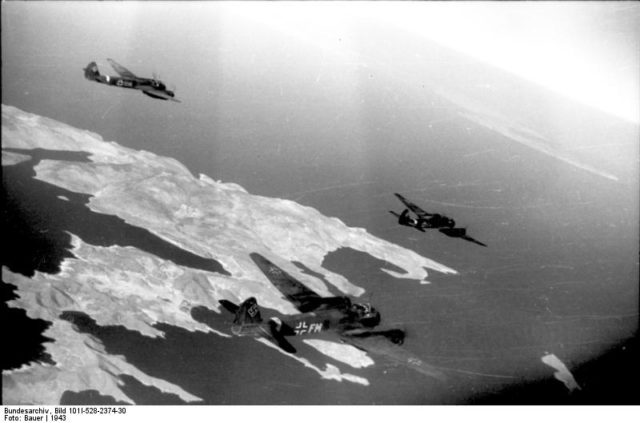
Unfortunately for him as his section got to within a mile of their target, more planes appeared. A full squadron of RAF Spitfire fighters dove down on the bombers, quickly wiping them from the sky.
Defeated, and frustrated by his first chance of combat being torn from just within his grasp, Nicolson led his planes back to their squadron. They began climbing back up to 18,000 feet to rejoin.
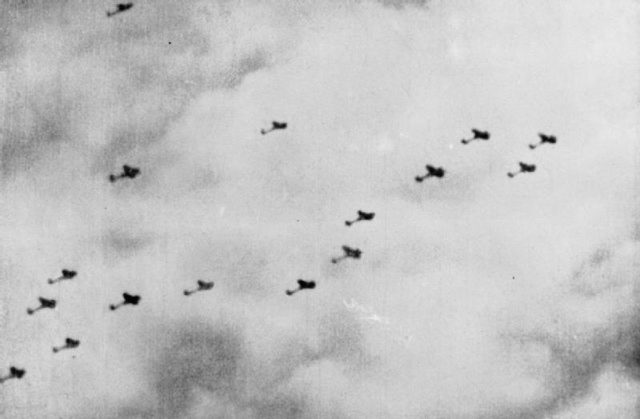
Nicolson was focused on getting back to the squadron and therefore was not scanning the horizon anymore. He had assumed that any escort for the bombers would have attacked the Spitfires, and his men were safe.
Suddenly four loud cracks turned his frustration into terror. In quick succession, his glass canopy exploded overhead, sending splinters flying through the cockpit. One got lodged just above his left eye, nearly severing his eyelid. Another round exploded into his spare fuel tank, setting it ablaze.
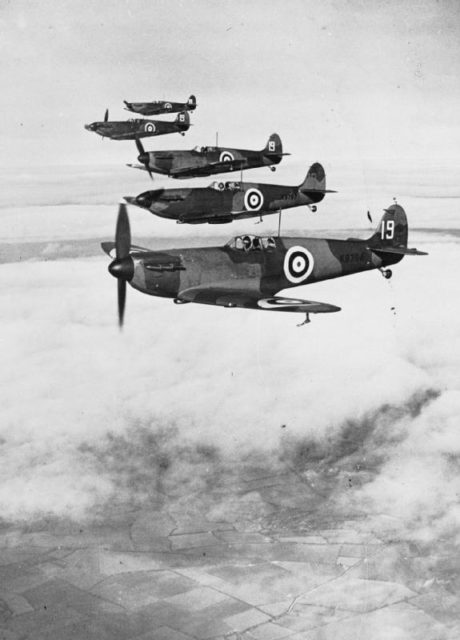
The third and fourth tore off his trouser leg shattering his left heel. Nicolson did not know any of this at the time. Adrenaline had filled his blood, and he could not feel any pain.
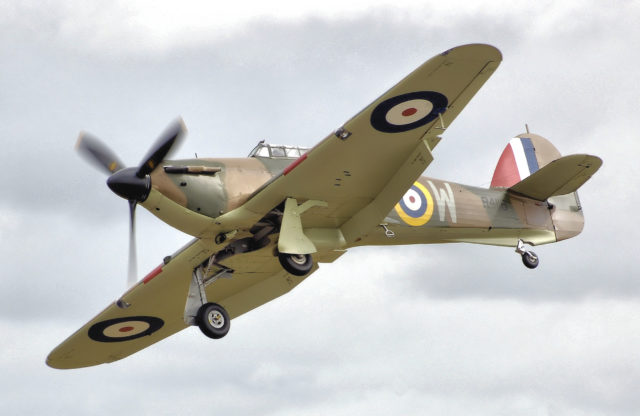
Stunned, and barely able to see, Nicolson looked around trying to find where the rounds had come from. He spotted a Messerschmitt Me-110 heavy fighter as it sped past him. Nicolson dove away, hoping to avoid any further attacks.
He cursed himself for being so foolish and letting his guard down. He knew that, with a fuel tank on fire, and severe wounds, he could not safely land his plane, so he prepared to bail out. Suddenly, another Me-110 flew in front of him.
This new 110 was speeding away from his squadron, headed back to Germany, but Nicolson was not going to let him get away so easily. At this point the young English pilot was furious. He had had one opportunity for victory taken from him and had then been shot. He was not about to let another opportunity slip through his grasp. Nicolson opened his throttle and chased after the lone fighter.
Luckily for him, his gun sights were intact. He had primed his weapons for combat while chasing the Ju-88s, so he was ready for a fight. Just as the German passed in front, Nicolson let out a burst of fire from his Hawker Hurricane’s 8 .303 machine guns.
This got the German’s attention, and he took evasive action. Diving after the 110 Nicolson tried to pick up enough speed to catch him.
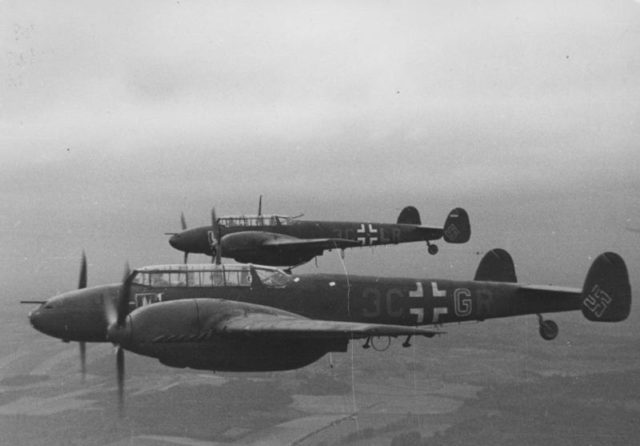
Reaching speeds of around 400 Kilometers/hour, the two planes began a game of cat and mouse. The German banked left, then right, zig-zagging, attempting to get out of Nicolson’s gun sights just long enough to escape.
Inside his cockpit, Nicolson was struggling to remain in the fight. The flames from the burning fuel tank were heating the fuselage, and the cockpit interior turned into an oven.
He could see his left hand, firmly on the throttle, begin to burn. He did not feel the pain; he just wanted to get this one kill and get out.
According to Nicolson, he had started screaming curses at the German, saying “I’ll teach you some manners, you Hun!” when the ME-110 appeared in his sights. As he watched his left-hand burning, he knew it was time to get out.
Nicolson fired the rest of his ammunition into the German plane. He had no idea if he had done any real damage, but he was finished with fighting.
In a hurried effort to escape, he jumped up walloping his head against the cockpit frame overhead. Cursing his foolishness again, he slid open the canopy. He jumped again but ended up back in his seat, and the burning aircraft. He had forgotten to undo his straps. One had already snapped, and the other three were quickly released.
Finally, he jumped out of his doomed plane and somersaulted towards the ground. It was around 12-15,000 feet above the earth, but the young pilot was moving quickly.
He righted himself into a headfirst dive and pulled the ripcord of his parachute. In a rush of fabric, lines, and buckles he was suddenly suspended, silently, above the seemingly calm southern English coast. The battle, however, was still being waged around him.
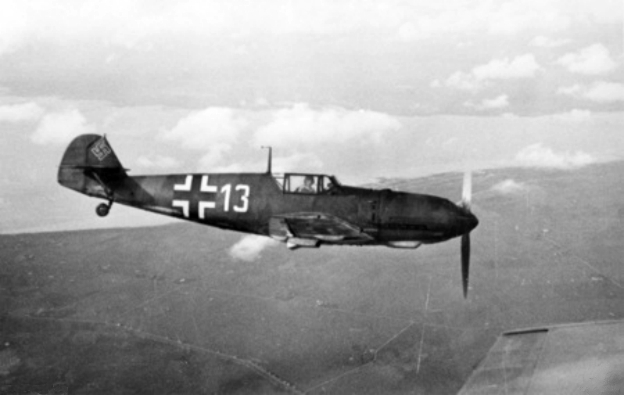
A Messerschmitt Me-109 made a flyby pass at the floating aviator. Nicolson saw him coming, playing dead by floating limply. He did not hear the burst of machine gun fire he had expected and continued drifting downward.
By now his adrenaline had evaporated, and pain came rushing through him. His left hand was badly burnt, bone showing through what was left of his glove. His face was covered in blood, as was his left foot. His uniform was in tatters, scorched, and barely recognizable. But he was alive.
When he landed, he was picked up by members of the Home Guard, Britain’s auxiliary military volunteers, who patrolled their nation for intruders, and bomber formations. It was from these men he learned of his first aerial victory. They reported a Me-110 had crashed into the ocean, just near where he landed.
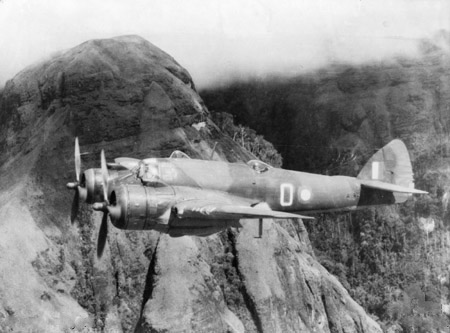
Flying Officer Nicolson was given hospital treatment for his burns, and while in rehabilitation was promoted to Flight Lieutenant. On November 15, 1940, he received another surprise: he was awarded the Victoria Cross. He wrote his wife a telegram later that day: “Darling, just got VC. Don’t know why.”
Flight Lieutenant Nicolson returned to the fight in 1942, as a Bristol Beaufighter Pilot in Burma. He served with distinction there, and eventually became a Squadron Leader and Commanding Officer. He was tragically killed on May 2, 1945, while acting as an observer in a B-24 reconnaissance mission over the Bay of Bengal.
His VC Citation:
During an engagement with the enemy near Southampton on 16th August 1940, Flight Lieutenant Nicolson’s aircraft was hit by four cannon shells, two of which wounded him whilst another set fire to the gravity tank. When about to abandon his aircraft owing to flames in the cockpit he sighted an enemy fighter.
This he attacked and shot down, although as a result of staying in his burning aircraft he sustained serious burns to his hands, face, neck and legs.
Flight Lieutenant Nicolson has always displayed great enthusiasm for air fighting and this incident shows that he possesses courage and determination of a high order.
By continuing to engage the enemy after he had been wounded and his aircraft set on fire, he displayed exceptional gallantry and disregard for the safety of his own life.
